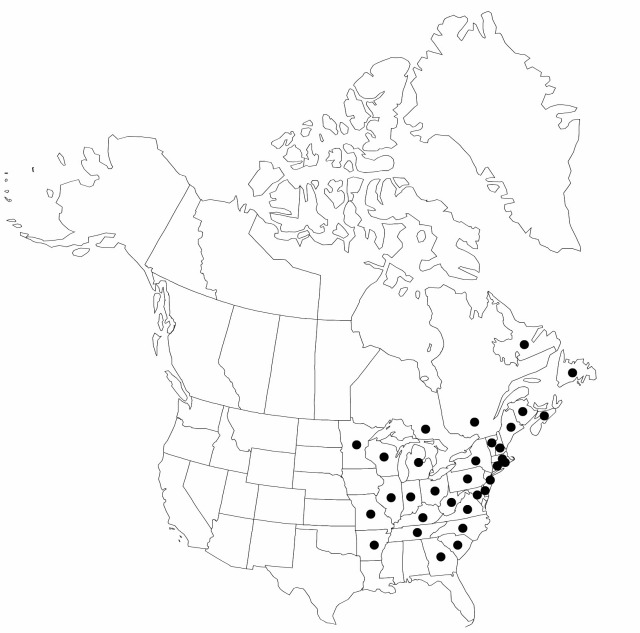Difference between revisions of "Carex communis"
Mem. Torrey Bot. Club 1: 41. 1889.
imported>Volume Importer |
RevisionBot (talk | contribs) m (Bot: Adding category Revised Since Print) |
||
| (2 intermediate revisions by 2 users not shown) | |||
| Line 61: | Line 61: | ||
|publication year=1889 | |publication year=1889 | ||
|special status=Illustrated;Endemic | |special status=Illustrated;Endemic | ||
| − | |source xml=https:// | + | |source xml=https://bitbucket.org/aafc-mbb/fna-data-curation/src/2e0870ddd59836b60bcf96646a41e87ea5a5943a/coarse_grained_fna_xml/V23/V23_1014.xml |
|genus=Carex | |genus=Carex | ||
|section=Carex sect. Acrocystis | |section=Carex sect. Acrocystis | ||
| Line 67: | Line 67: | ||
}}<!-- | }}<!-- | ||
| − | -->[[Category:Treatment]][[Category:Carex sect. Acrocystis]] | + | --> |
| + | |||
| + | [[Category:Treatment]] | ||
| + | [[Category:Carex sect. Acrocystis]] | ||
| + | [[Category:Revised Since Print]] | ||
Latest revision as of 18:37, 6 November 2020
Plants densely cespitose; rhizomes ascending, reddish brown to purplish brown, 0–3 mm, stout or absent. Culms 20–60 cm, scabrous distally; bases (remnants of old leaves) slightly or not fibrous. Leaf blades green, 1.8–5 mm wide, widest leaves 3+ mm wide, herbaceous, papillose to scabrous abaxially, papillose to scabrous adaxially. Inflorescences usually with both staminate and pistillate spikes, rarely only pistillate; peduncle of staminate spike 0.7–9.7 mm; proximal nonbasal bracts leaflike, usually shorter than inflorescences. Spikes: proximal pistillate spikes 2–3 (basal spike 0); cauline spikes usually clearly separated, with 3–10 perigynia; staminate spikes 3.1–15.5 × 1–2.5 mm. Scales: pistillate scales pale brown to dark reddish brown, often with broad white margins, ovate to lanceolate, 2.5–4.8 × 1.2–2 mm, shorter than to exceeding perigynia, apex obtuse to acuminate or short-awned; staminate scales elliptic to obovate, 3.1–5.2 × 0.7–2.2 mm, apex obtuse to acuminate or short-aristate. Anthers 1.8–3 mm. Perigynia pale green, veinless, globose to obovoid, 2.7–3.8 × 1.2–2.6 mm, as long as wide; beak usually straight, occasionally slightly bent, pale green, 0.5–2.3 mm, weakly ciliate-serrulate, apical teeth 0.1–0.5 mm. Stigmas 3. Achenes pale brown, globose to obovoid, round to obtusely trigonous in cross section, 1.4–2.3 × 1–1.4 mm.
Distribution

N.B., N.S., Ont., Que., Ark., Conn., Del., Ga., Ill., Ind., Ky., Maine, Mass., Md., Mich., Minn., Mo., N.C., N.H., N.J., N.Y., Ohio, Pa., R.I., S.C., Tenn., Va., Vt., W.Va., Wis.
Discussion
Varieties 2 (2 in the flora).
Selected References
None.
Key
| 1 | Apical teeth of perigynium beak usually 0.1–0.2(–0.3) mm; pistillate scales usually 1.6 mm wide or less. | Carex communis var. communis |
| 1 | Apical teeth of perigynium beak usually more than 0.2 mm; pistillate scales usually more than 1.6 mm wide. | Carex communis var. amplisquama |